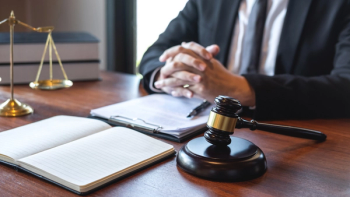
- Pharmaceutical Executive-03-01-2011
- Volume 0
- Issue 0
A Rule of Thumb Gets Shot Down
The Federal Circuit court continues its trend in tightening the standards for establishing patent damages by leapfrogging a stalled legislative process
On Jan. 4, in Uniloc USA Inc. v. Microsoft Corp., the US Court of Appeals for the Federal Circuit continued its trend, without the need for legislative reform, to tighten the standards for establishing patent damages awards by rejecting the commonly used 25 Percent Rule in calculating a reasonable royalty.
The inability of Congress to pass legislative reform has provided the courts the occasion to address patent infringement issues, most recently rejecting the commonly used 25 Percent Rule. (Getty Images / Don Farrall)
The 25 Percent Rule is a general "rule of thumb" that says a patent infringer should pay 25 percent of the expected profits for the product that incorporates the patent at issue.
Susan M. Dadio
One of the greatest obstacles in passing legislative patent damages reform is the diverging interests of the pharmaceutical and biotechnology industries versus the high technology industry. The high technology industry, which develops complex products that include an array of technologies covered by a significantly large number of patents, has been strongly advocating for a limit to the amount of damages awarded in patent infringement cases. On the other hand, the pharmaceutical and biotechnology industries need strong, appropriately valued patents, as their products, which are covered by fewer patents, require substantial time and investment costs when being brought to the market.
Russell L. Parr
Prior to the Uniloc decision, Congress' last attempt to reform patent damages was a Senate proposal in the 111th Congress (2009 to 2011) that involved a compromise approach between the stakeholders whereby the district court judges would serve as a "gatekeeper" in handling damages so as to exclude unsound theories and irrelevant evidence, and provide clear jury instructions. Shortly after the Uniloc decision, patent damages reform legislation was reintroduced in the Senate during the current 112th Congress (as part of S.23: Patent Reform Act of 2011) and contains the same gatekeeper provisions as earlier proposed.
Some judges of the Federal Circuit, which is a specialized court that has exclusive jurisdiction for all patent appeals, have been vocal about their opposition to patent damages reform, believing instead that the courts can handle the issue without further legislation.
The inability of Congress to pass legislative reform addressing patent infringement damages has provided courts the opportunity to address the issue in a series of decisions that have tightened the standards for calculating reasonable royalty rate damages in patent infringement cases. The Uniloc decision is the most recent in this series.
What's at Stake
A reasonable royalty is often determined in a patent litigation on the basis of a hypothetical negotiation occurring between the parties at the time that infringement began. The 25 Percent Rule is a tool used to help calculate the reasonable royalty during this hypothetical negotiation. Other tools include an analysis of the fifteen factors set forth in the seminal Georgia-Pacific case and an Analytical Method. The fifteen factors set out in Georgia-Pacific Corp. v. U.S. Plywood Corp. are evidentiary facts relevant to reasonable royalty determinations compiled from earlier patent cases. The Analytical Method calculates a royalty based on the extra profits that were earned by the infringer as a result of the infringement.
In patent litigation, many damages experts came to use the 25 Percent Rule to support a royalty rate that had been determined based on the Georgia-Pacificfactors or used the 25 Percent Rule as the starting point for a reasonable royalty analysis. When used as a starting point, a royalty rate based on 25 percent of the expected profit was then adjusted upwardly or downwardly depending upon other factors in the case. The 25 Percent Rule tended to give some predictability to the determination of patent infringement damages since a significant deviation from the 25 Percent Rule usually required justification to be acceptable to the judge or to the jury.
In the Uniloc decision, the panel of the Federal Circuit recognized that the 25 Percent Rule had been "passively tolerated" in past cases, but indicated that "[t]he admissibility of the bare 25 Percent Rule had never been squarely presented to [the] court." After considering various Supreme Court precedent, the Uniloc panel stated that "as a matter of Federal Circuit law … the 25 Percent Rule of thumb is a fundamentally flawed tool for determining a baseline royalty rate in a hypothetical negotiation … because it fails to tie a reasonable royalty base to the facts of the case at issue."
What's it Mean?
In the wake of the Uniloc decision, patent damage experts will be without the 25 Percent Rule as a starting point or general frame of reference for the hypothetical negotiation. Therefore, from a quantitative perspective, royalties received by the patentee for the licensing of the patent-in-suit (Georgia-Pacific factor 1) and the rates paid by the licensee for the use of other patents comparable to the patent-in-suit (Georgia-Pacific factor 2) will be increasingly more important in determining the reasonable royalty rate during the hypothetical negotiation.
While litigants in the pharmaceutical and biotechnology industries are less likely than those in some other technology areas to have an absence of market comparable royalties, such litigants need to understand that, in two of the prior Federal Circuit decisions in this series of cases tightening the standards for establishing patent damages, the court has highly scrutinized the licenses used for purposes of setting the appropriate royalty rate.
The decision in the Uniloc case underscores the importance of tying damages calculations to the facts and circumstances of the particular case and continues a trend in recent Federal Circuit decisions towards the gatekeeper role of district court judges in handling damages. Thus, from the perspective of the pharmaceutical and biotechnology industries, this trend will hopefully negate the need for any significant legislative patent damages reform.
Susan M. Dadio, a Shareholder at Buchanan, Ingersoll & Rooney, PC, is the IP Biotechnology Practice Group Leader. She can be reached at
Russell L. Parr, President of IPRA, is an expert in determining the value of intellectual property, and publishes three royalty rate resource books about the economic aspects of IP transactions. He can be reached at
Articles in this issue
almost 15 years ago
Pharmaceutical Executive Digital Edition - March 2011almost 15 years ago
PICASSO—Truly a Work of Artalmost 15 years ago
The Netherlands: Innovation through Collaborationalmost 15 years ago
Restructured for Successalmost 15 years ago
The "Other" Innovationalmost 15 years ago
Where have all the Scientists Gone?almost 15 years ago
Making Sense of Market Chaosalmost 15 years ago
Pharm Exec's Seventh Annual Media Auditalmost 15 years ago
New Tools Track Safety, Value in Medicinealmost 15 years ago
John Castellani: Industry's Level Bet on a Dizzying FutureNewsletter
Lead with insight with the Pharmaceutical Executive newsletter, featuring strategic analysis, leadership trends, and market intelligence for biopharma decision-makers.





